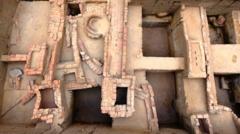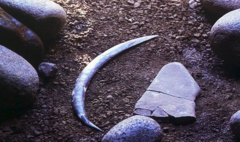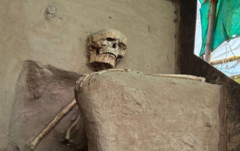In the early 20th century, Rakhaldas Banerjee emerged as a pivotal figure in archaeology, famed for unearthing the ancient city of Mohenjo-daro, a significant site of the Indus Valley Civilization located in modern-day Pakistan. This civilization flourished approximately 5,300 years ago and was one of the first urban cultures in the world, covering parts of present-day Afghanistan and India. Despite his monumental contributions, Banerjee’s name is often neglected in global historical discourse.
Banerjee, who worked under the British colonial regime for the Archaeological Survey of India (ASI), dedicated his career to exploring India’s rich past. His resolute passion for archaeology led him to spend lengthy periods scourging remote areas for archaeological remnants, including rare artifacts and scripts. His notable discovery of Mohenjo-daro, an urban center characterized by advanced architecture and urban planning, revolutionized how historians perceived ancient Indian society.
However, Banerjee's legacy is entangled in controversy. The publication of his findings regarding Mohenjo-daro was never realized, as ASI's leadership allegedly suppressed his work in favor of a more politically favorable narrative led by John Marshall. As Prof. PK Mishra articulates, Banerjee is reduced to a mere "footnote" in history lessons, with Marshall unjustly credited for the discovery.
Historians such as Nayanjot Lahiri emphasize Banerjee's lack of diplomatic sensibility, which complicated his relations with his superiors, leading to his eventual isolation within professional circles. Accounts of his tenure reveal a man who often defied colonial protocols, sometimes even mismanaging excavations and expenses, which drew concern from the ASI. His decision to procure artifacts without prior approvals and his alleged misuse of project funds resulted in disciplinary scrutiny and ultimately a transfer to a less influential role.
Born into privilege in 1885, Banerjee’s fascination with history was sparked by the medieval landmarks surrounding his childhood home in Baharampur. He quickly ascended the ranks of the ASI, becoming a significant excavator of Mohenjo-daro from 1919 to 1924. His discovery that three seals from his excavations bore striking similarities to artifacts from Harappa played a crucial role in establishing connections between critical sites of the Indus Valley civilization.
Unfortunately, his funding dwindled during the mid-1920s, and with a mix of personal and procedural strife, Banerjee requested a transfer, which was granted despite ongoing investigations into his spending practices. The situation worsened when he was implicated in an idol theft case, casting a shadow over his professional standing, despite his innocence. The situation culminated in his resignation from ASI amidst rising tension and accusations.
Post-ASI, Banerjee's academic undertakings at the Banaras Hindu University were marred by financial troubles stemming from a luxurious lifestyle. Tragically, he passed away at just 45 years old in 1930, leaving behind a legacy marked both by his extraordinary discoveries and the controversies that overshadowed them. Today, as historians reevaluate his contributions, Rakhaldas Banerjee stands as a figure worthy of greater recognition in the narrative of India's archaeological heritage.
Banerjee, who worked under the British colonial regime for the Archaeological Survey of India (ASI), dedicated his career to exploring India’s rich past. His resolute passion for archaeology led him to spend lengthy periods scourging remote areas for archaeological remnants, including rare artifacts and scripts. His notable discovery of Mohenjo-daro, an urban center characterized by advanced architecture and urban planning, revolutionized how historians perceived ancient Indian society.
However, Banerjee's legacy is entangled in controversy. The publication of his findings regarding Mohenjo-daro was never realized, as ASI's leadership allegedly suppressed his work in favor of a more politically favorable narrative led by John Marshall. As Prof. PK Mishra articulates, Banerjee is reduced to a mere "footnote" in history lessons, with Marshall unjustly credited for the discovery.
Historians such as Nayanjot Lahiri emphasize Banerjee's lack of diplomatic sensibility, which complicated his relations with his superiors, leading to his eventual isolation within professional circles. Accounts of his tenure reveal a man who often defied colonial protocols, sometimes even mismanaging excavations and expenses, which drew concern from the ASI. His decision to procure artifacts without prior approvals and his alleged misuse of project funds resulted in disciplinary scrutiny and ultimately a transfer to a less influential role.
Born into privilege in 1885, Banerjee’s fascination with history was sparked by the medieval landmarks surrounding his childhood home in Baharampur. He quickly ascended the ranks of the ASI, becoming a significant excavator of Mohenjo-daro from 1919 to 1924. His discovery that three seals from his excavations bore striking similarities to artifacts from Harappa played a crucial role in establishing connections between critical sites of the Indus Valley civilization.
Unfortunately, his funding dwindled during the mid-1920s, and with a mix of personal and procedural strife, Banerjee requested a transfer, which was granted despite ongoing investigations into his spending practices. The situation worsened when he was implicated in an idol theft case, casting a shadow over his professional standing, despite his innocence. The situation culminated in his resignation from ASI amidst rising tension and accusations.
Post-ASI, Banerjee's academic undertakings at the Banaras Hindu University were marred by financial troubles stemming from a luxurious lifestyle. Tragically, he passed away at just 45 years old in 1930, leaving behind a legacy marked both by his extraordinary discoveries and the controversies that overshadowed them. Today, as historians reevaluate his contributions, Rakhaldas Banerjee stands as a figure worthy of greater recognition in the narrative of India's archaeological heritage.




















